
How to Use XL47015 DC- DC STEP DOWN CONVERTER MODULE: Examples, Pinouts, and Specs
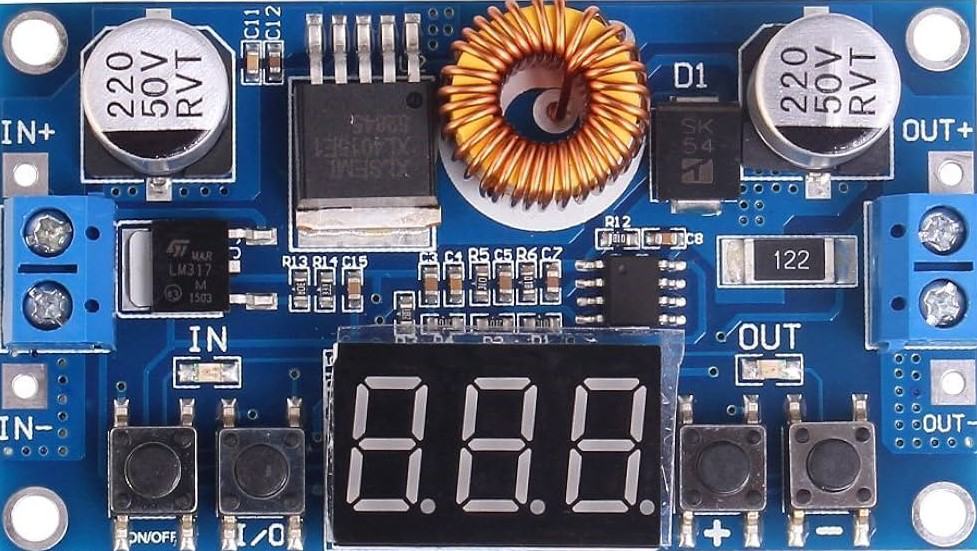
 Design with XL47015 DC- DC STEP DOWN CONVERTER MODULE in Cirkit Designer
Design with XL47015 DC- DC STEP DOWN CONVERTER MODULE in Cirkit DesignerIntroduction
The XL4701-5 DC-DC Step Down Converter Module is a compact and efficient voltage regulator designed to convert a higher DC input voltage to a lower, stable DC output voltage. This module is based on the XL4701-5 chip, which ensures high efficiency and reliable performance. It is widely used in applications requiring regulated power for microcontrollers, sensors, and other electronic devices.
Explore Projects Built with XL47015 DC- DC STEP DOWN CONVERTER MODULE
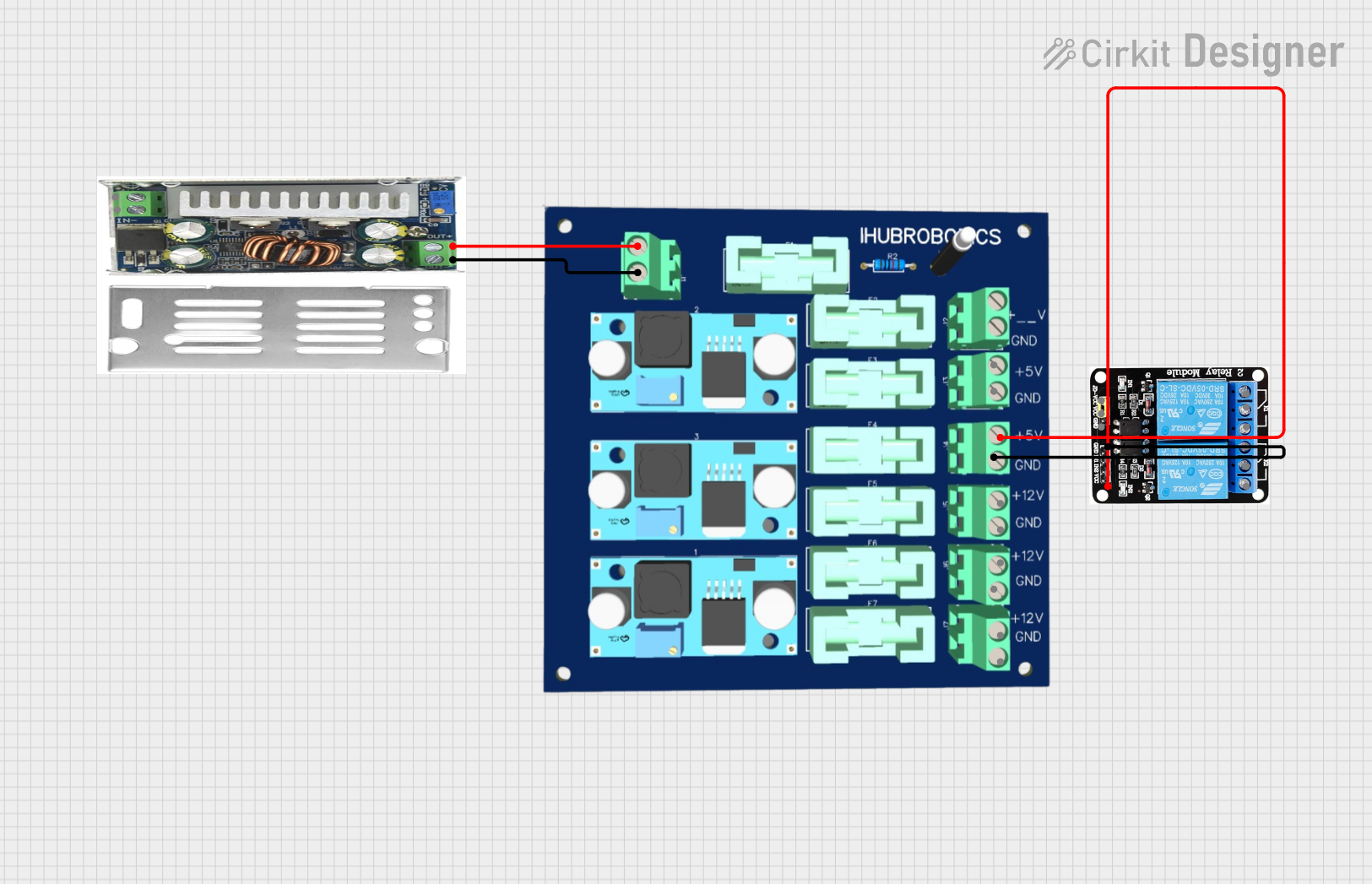
 Open Project in Cirkit Designer
Open Project in Cirkit Designer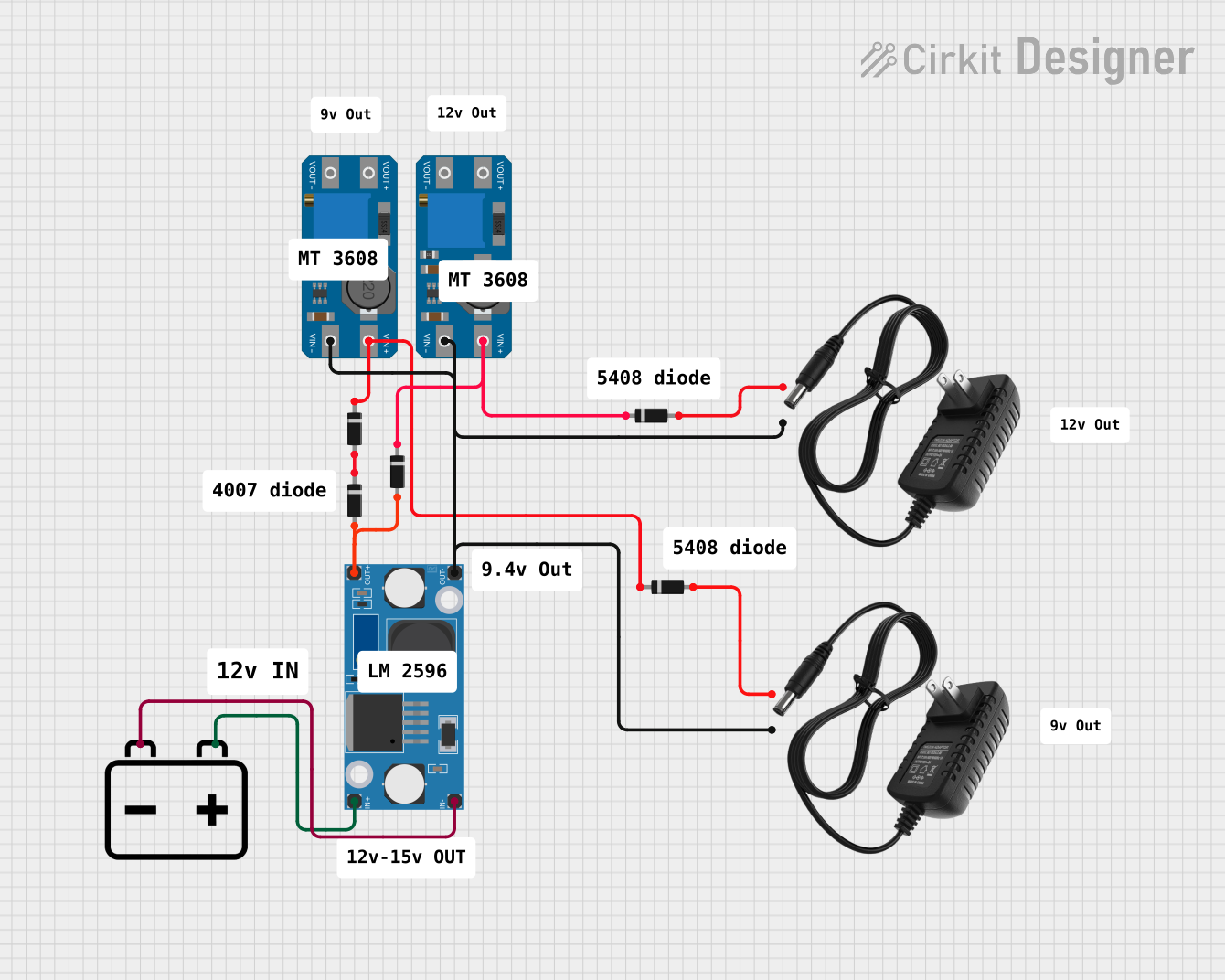
 Open Project in Cirkit Designer
Open Project in Cirkit Designer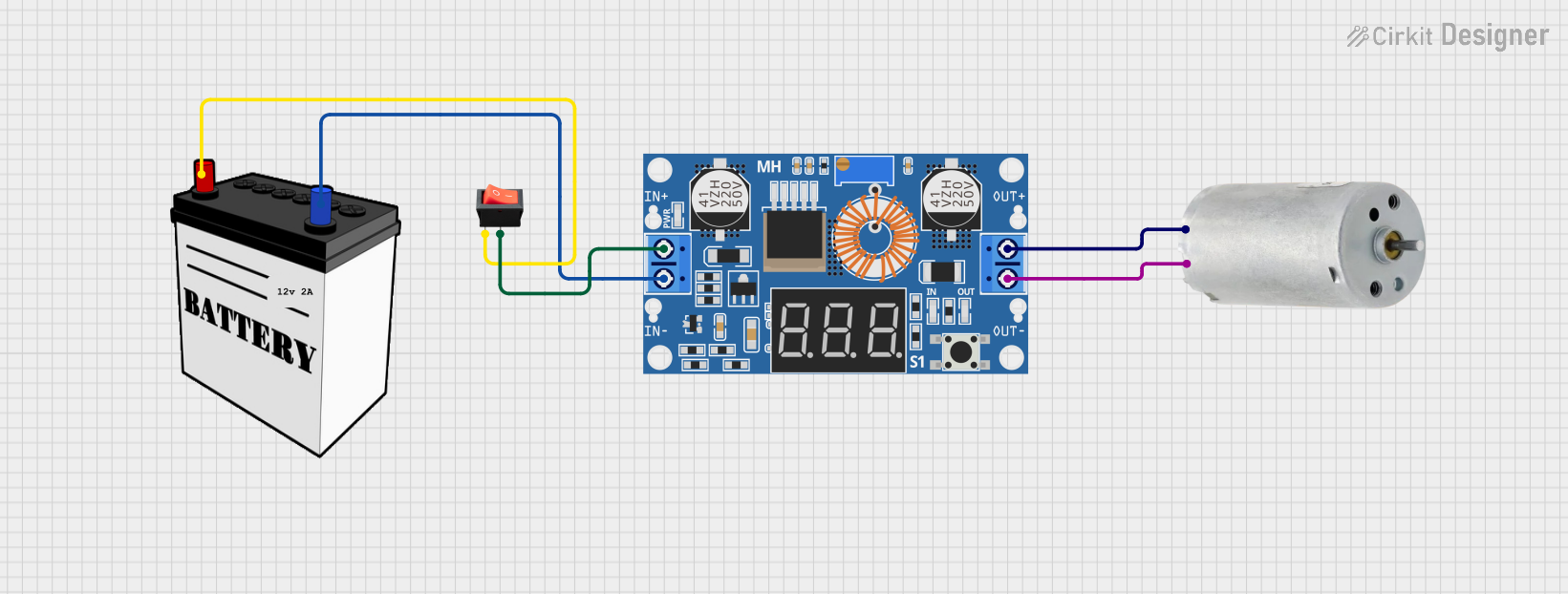
 Open Project in Cirkit Designer
Open Project in Cirkit Designer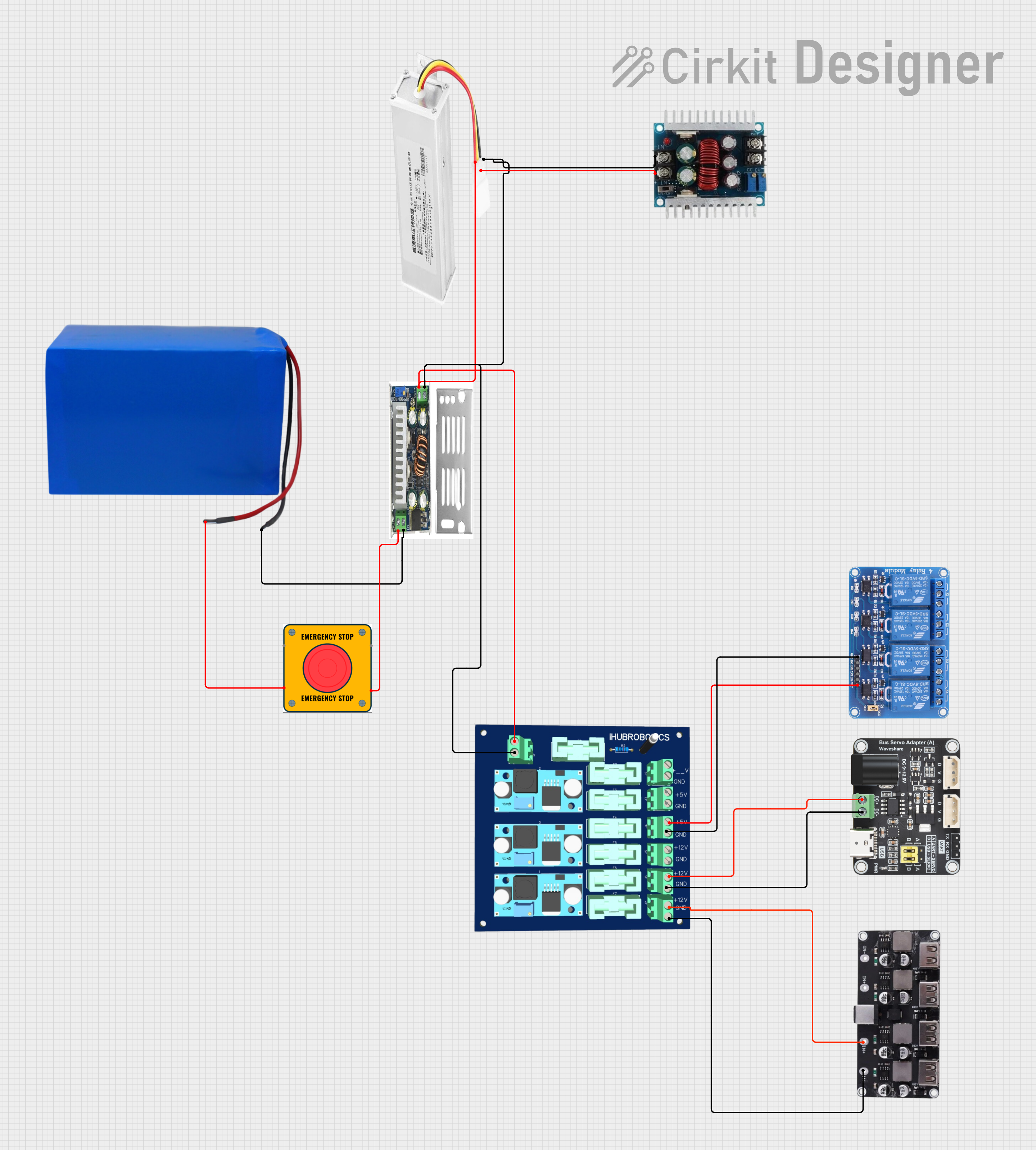
 Open Project in Cirkit Designer
Open Project in Cirkit DesignerExplore Projects Built with XL47015 DC- DC STEP DOWN CONVERTER MODULE

 Open Project in Cirkit Designer
Open Project in Cirkit Designer
 Open Project in Cirkit Designer
Open Project in Cirkit Designer
 Open Project in Cirkit Designer
Open Project in Cirkit Designer
 Open Project in Cirkit Designer
Open Project in Cirkit DesignerCommon Applications and Use Cases
- Powering microcontrollers (e.g., Arduino, ESP32, Raspberry Pi)
- Battery-powered devices requiring voltage regulation
- LED drivers and lighting systems
- Robotics and IoT projects
- General-purpose DC voltage regulation in electronic circuits
Technical Specifications
Below are the key technical details and pin configuration for the XL4701-5 DC-DC Step Down Converter Module:
Key Technical Details
| Parameter | Value |
|---|---|
| Input Voltage Range | 4.5V to 40V |
| Output Voltage Range | 1.25V to 37V (adjustable) |
| Output Current | Up to 5A |
| Efficiency | Up to 92% |
| Switching Frequency | 180 kHz |
| Operating Temperature | -40°C to +85°C |
| Dimensions | Approx. 43mm x 21mm x 14mm |
Pin Configuration and Descriptions
| Pin Name | Description |
|---|---|
| VIN | Input voltage pin (connect to DC power source) |
| GND | Ground pin (common ground for input and output) |
| VOUT | Output voltage pin (connect to load) |
| ADJ | Voltage adjustment pin (connected to potentiometer for output voltage tuning) |
Usage Instructions
How to Use the XL4701-5 in a Circuit
Connect the Input Voltage (VIN):
- Connect the positive terminal of your DC power source to the
VINpin. - Connect the negative terminal of your DC power source to the
GNDpin.
- Connect the positive terminal of your DC power source to the
Connect the Output Voltage (VOUT):
- Connect the
VOUTpin to the positive terminal of your load (e.g., microcontroller, LED). - Connect the
GNDpin to the ground of your load.
- Connect the
Adjust the Output Voltage:
- Use the onboard potentiometer to adjust the output voltage.
- Turn the potentiometer clockwise to increase the output voltage and counterclockwise to decrease it.
- Use a multimeter to measure the output voltage while adjusting.
Verify Connections:
- Double-check all connections to ensure proper polarity and avoid short circuits.
Important Considerations and Best Practices
- Input Voltage Range: Ensure the input voltage is within the specified range (4.5V to 40V). Exceeding this range may damage the module.
- Heat Dissipation: For high current loads, the module may heat up. Use a heatsink or active cooling if necessary.
- Output Voltage Adjustment: Always measure the output voltage with a multimeter before connecting sensitive devices.
- Load Current: Do not exceed the maximum output current of 5A to prevent overheating or damage.
Example: Using XL4701-5 with Arduino UNO
Below is an example of how to use the XL4701-5 to power an Arduino UNO with a 12V DC input:
- Connect a 12V DC power source to the
VINandGNDpins of the XL4701-5. - Adjust the output voltage to 5V using the potentiometer.
- Connect the
VOUTpin to the 5V pin of the Arduino UNO. - Connect the
GNDpin of the XL4701-5 to the GND pin of the Arduino UNO.
Here is a simple Arduino code to blink an LED, powered by the XL4701-5:
// Simple LED Blink Example
// Ensure the XL4701-5 is providing 5V to the Arduino UNO
const int ledPin = 13; // Pin connected to the onboard LED
void setup() {
pinMode(ledPin, OUTPUT); // Set the LED pin as an output
}
void loop() {
digitalWrite(ledPin, HIGH); // Turn the LED on
delay(1000); // Wait for 1 second
digitalWrite(ledPin, LOW); // Turn the LED off
delay(1000); // Wait for 1 second
}
Troubleshooting and FAQs
Common Issues and Solutions
No Output Voltage:
- Cause: Incorrect wiring or insufficient input voltage.
- Solution: Verify the input voltage is within the specified range and check all connections.
Output Voltage Fluctuates:
- Cause: Load current exceeds the module's capacity or unstable input voltage.
- Solution: Reduce the load current or ensure a stable input voltage.
Module Overheats:
- Cause: High current load or poor ventilation.
- Solution: Use a heatsink or active cooling, and ensure the load current is within limits.
Cannot Adjust Output Voltage:
- Cause: Faulty potentiometer or incorrect adjustment.
- Solution: Check the potentiometer for damage and adjust slowly while monitoring with a multimeter.
FAQs
Q: Can I use the XL4701-5 to power a Raspberry Pi?
A: Yes, but ensure the output voltage is set to 5V and the current demand of the Raspberry Pi (including peripherals) does not exceed 5A.
Q: Is the module protected against reverse polarity?
A: No, the XL4701-5 does not have built-in reverse polarity protection. Always double-check the polarity of your connections.
Q: Can I use this module for battery charging?
A: While it can regulate voltage, it is not specifically designed for battery charging. Use a dedicated battery charging IC for optimal performance.
Q: What is the efficiency of the module at different loads?
A: The efficiency is typically around 90-92% at moderate loads but may vary depending on the input/output voltage and load current.
By following this documentation, you can effectively integrate the XL4701-5 DC-DC Step Down Converter Module into your projects for reliable and efficient voltage regulation.